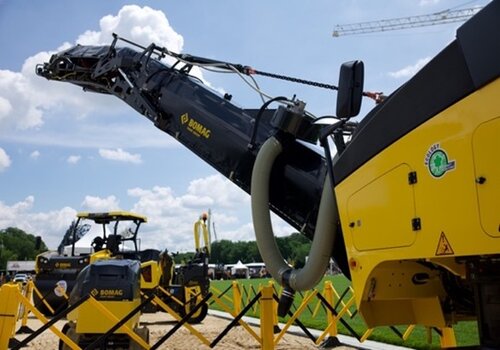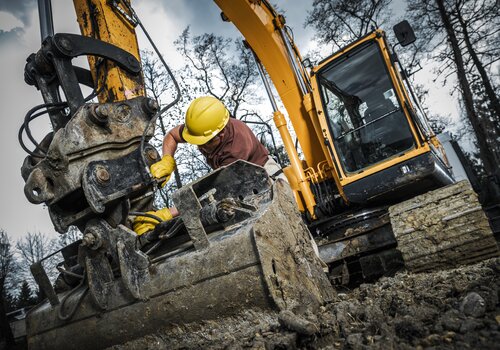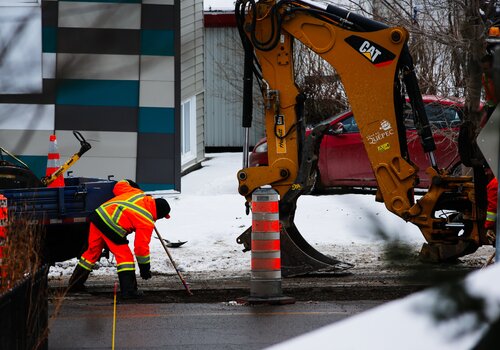Conducting regular preventive maintenance extends the life of excavators, ensures efficiency, avoids unnecessary downtime from breakdowns and saves money by improving operations and productivity of the machine.
Although excavator manufacturers have unique service plans for each model, there are some general guidelines that apply to all.
Maintenance frequency
First, consult the excavator’s operator’s manual and the excavator dealer for information on service intervals and maintenance checklists. Service manuals lay out the daily checks and service and replace checks at 100 hours, 250 hours, 500 hours, and 1,000 hours, counsels Greg Worley, Mini Excavator Product Expert at Caterpillar.
“Always follow the OEM recommended service plan because OEMs have studied when those tasks should be completed to be the most cost-effective and to meet the warranty terms,” Tyler Smith, Product Manager – Training at Volvo, advises. “There are daily checks, and even weekly checks and services that typically need to be completed at 500 hours – for example, oil changes, fuel filters, and service belts.”
He notes that Volvo excavators now have a 1,000-hour engine oil change interval, which “helps save maintenance time and money.”
John Deere recommends maintenance based on hours of operation, says Justin Steger, the company’s Solutions Marketing Manager. The company lists recommended service intervals in the operator’s manual and its Uptime Maintenance Planner, as well as the periodic maintenance chart physically located on the machine.
“However, any time a machine has been sitting inactive for extended periods of time, it is important to inspect a more thoroughly and be proactive when necessary,” he says. “Checking fluid levels, filters, grease and maybe even fluid sampling from each system on the excavator after long periods of machine inactivity could provide reassurance the machine is in optimum operating condition.”
Undercarriage maintenance
Problems with an excavator’s undercarriage can account for more than half of maintenance costs, Caterpillar’s Worley points out.
The most expensive part of the machine, the undercarriage, supports the total weight of the machine. It is continuously subjected to rocks and other obstacles when in operation and many of the undercarriage’s parts are exposed to constant wear and stress, asserts Volvo's Smith.
Volvo recommends conducting a visual inspection of the undercarriage once a week or every 40 operating hours. To assist with inspections, Volvo Construction has an undercarriage visual checklist for contractors to follow.
Importance of daily inspections
In addition to a regular maintenance schedule, manufacturers emphasize the importance of daily checks to help keep excavators in top working order.
“Operators are the first line of defense in making sure the excavator is in optimum operating condition to keep the jobsite productive,” Deere’s Steger states. Regardless of whether an organization uses a lube tech to fuel and lubricate machines, is it advisable to require an operator to perform a daily walkaround? “It may seem redundant, but an extra set of eyes never hurts.”
For these daily inspections, Deere recommends:
- Inspecting the overall condition of hoses and components, looking for leaks, damage, and anything out of the ordinary.
- Performing checks on engine oil, engine coolant, and hydraulic oil levels.
- Lubricating the grease points on the machine as needed.
“Follow the periodic maintenance decal on the machine or in the operator’s manual to ensure performing the right level of inspection based on hours of operation,” he instructs. “This decal will also show you where each check is located on the machine.”
“Conducting daily checks not only ensures the machine is safe,” adds Caterpillar’s Worley, “it may also give you an early warning that something is starting to go wrong or fail. Seeing something early, like a loose bolt or fitting, will save you money and time in the long run.”
In addition, Caterpillar recommends that an excavator’s daily inspection checklist include:
- Looking at attachments for wear, damage, and security.
- Inspecting stick and boom structure for damage, including hydraulic lines for leaks.
- Inspecting tracks for wear, damages, and correct adjustment.
- Checking under the machine and opening all body access points for leaks and anything that just does not look right.
- Checking the fuel water separator, air-filter “tell-tale” monitor, and cooling packs for debris build-up.
- Checking and inspecting external cab mirrors, glass, lights, steps, and handrails.
- Checking controls and gauges inside of the cab.
Caterpillar has shared a video about Daily Maintenance and Inspection on the Cat® 304 and 305 CR Mini Excavators, which they say is representative of the process on any Cat mini excavator.
Pre-start checklist
Not taking a few minutes to inspect before operating the machine can hurt uptime, cause unnecessary damage and wear to an excavator and compromise safety, Volvo’s Smith says. With this, proactive inspections typically result in increased uptime.
He offered these guidelines for operators when performing an excavator walkaround:
- Start in the same place every day.
- Make the inspection routine as thorough as possible.
- Report the findings verbally to your supervisor, plus provide a written version using a checklist sheet.
Volvo provided the following basic checklist to assist with this:
- Visually inspect all compartments to see if there is any leakage or damage to components, then take the necessary action.
- Walk around the machine and make a visual check, taking a close look at the boom and arm for cracks, especially working in extremely harsh conditions or very cold climate zones. Areas to inspect that will ultimately save both time and money in unnecessary repair costs include:
- Boom and cylinder, arm and cylinder, and bucket and cylinder mounting.
- Main pump compartment.
- Battery compartment.
- Swing drive and main control valve.
- Track drive and track chain and shoes.
- Lower frame and superstructure.
- Side doors and cowl frames.
- Inspect the electrical box, engine air filter, and cab air filter.
- Check radiator and coolers.
- Inspect hydraulic lines and all hydraulic connections, pipes, and hoses.
- Remove dirt or small pieces of rock in the bucket linkage.
In addition, Smith advises filling up with fuel at the end of the shift to reduce the risk of condensation developing in the fuel tank overnight. Also, fill up the Diesel Exhaust Fluid (DEF).
“Always disconnect the main battery switch” he adds. Park the excavator with the digging equipment fully extended. In this position, the piston rods are protected.
Furthermore, he recommends leaning the undercarriage to reduce strain on the components, especially during wintertime. “If you fail to do this, the mud in the chain can freeze to the undercarriage and you may be unable to move the machine the next day. Not cleaning out the undercarriage will greatly reduce its life and likely add unnecessary expenses.”
Importance of recordkeeping
“Having up-to-date information helps when evaluating the service life of an excavator and can also help prove that an excavator has been properly serviced if the need to discuss issues with a dealer or manufacturer arises,” says Volvo’s Smith. “Keeping machine history is especially important because it is like the medical history of the machine.”
“It also helps with wear parts and allows you to prepare for preventive maintenance like replacing cutting edges, tires, or tracks on an excavator. What’s more, it will help you notice if something bigger is wrong or if the operator needs a training refresher.”
He encourages keeping oil sample records and sending out oil for analysis at every change interval as well as periodic spot checks to ensure that nothing is out of specification. Oil analysis also helps to catch components that are wearing out and allows planning for downtime or appropriate rebuild times on excavators that have higher hours.”
Excavators are a staple in nearly all construction businesses, and no doubt they’re a crucial piece of equipment in any fleet. Conducting regular, preventative maintenance on your excavator equipment can reduce the risk of equipment failure and downtime, as well as save money on costly repairs.
Read Next
3 Simple Steps to Extend the Life of Your Excavator Undercarriage












